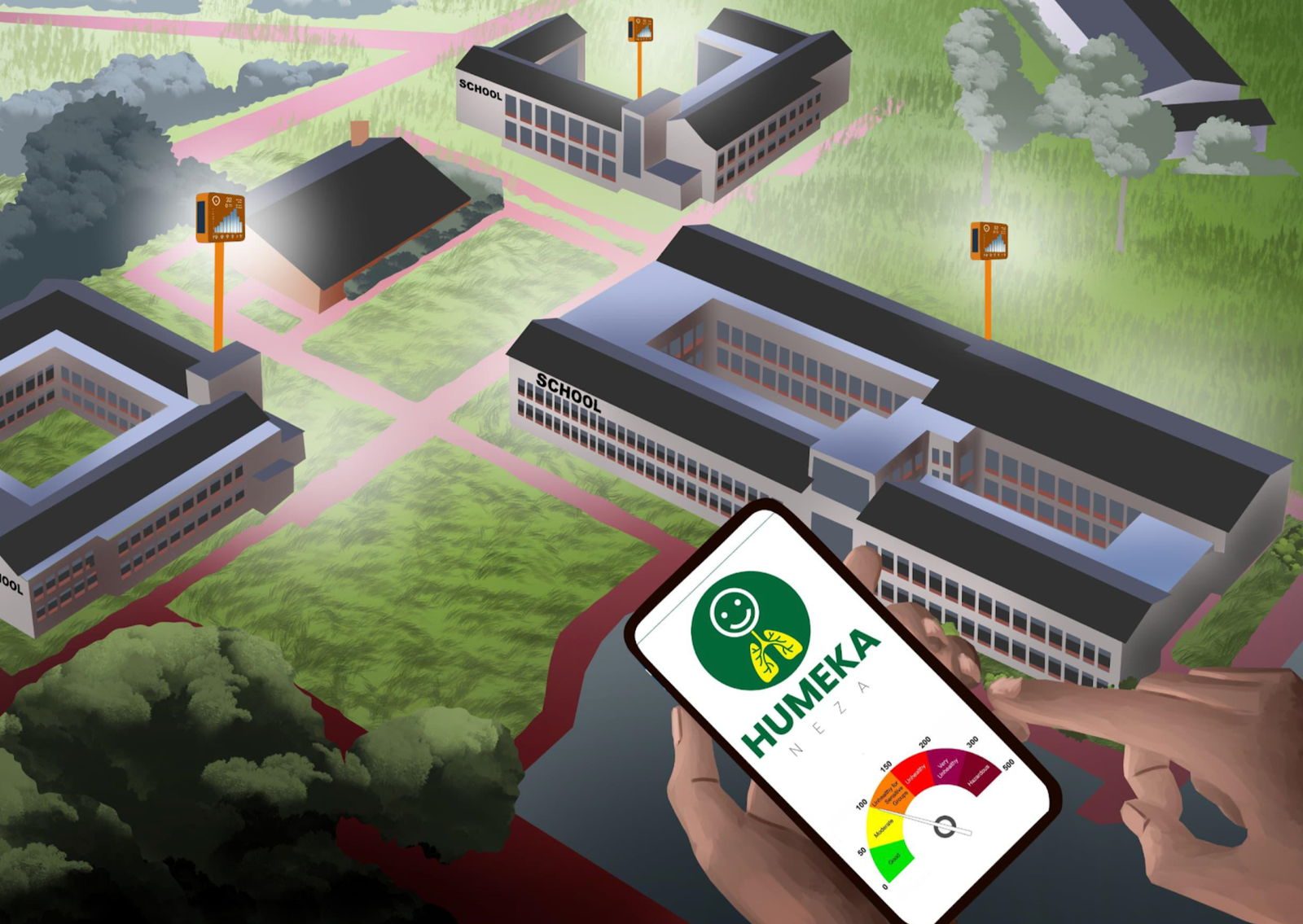
The One Sensor Per School initiative under the HumekaNeza (Breathe Easier) campaign equips schools across Africa with low-cost air quality sensors to monitor air pollution. Each school will install a sensor that tracks pollutants such as particulate matter (PM2.5, PM10) and nitrogen dioxide (NO₂), providing real-time air quality data to foster healthier environments for students and staff.
Key Features and Objectives
- Building a Network of Low-Cost Sensors:
Establishing a continent-wide network of sensors to provide a comprehensive overview of air pollution across different schools and regions. - Real-Time Data Sharing via Mobile App:
The initiative includes developing a mobile app accessible to parents, teachers, and students. This app will display real-time air quality data and AQI (Air Quality Index) for each school, helping the community stay informed. Schools can use the app to decide when it’s safe to conduct outdoor activities or recommend precautions on high-pollution days. - Educational Use for Capacity Building:
Sensors will also serve as teaching tools, enabling students to engage in hands-on learning about environmental science and air quality monitoring. The data can be integrated into science curricula, promoting awareness of pollution’s impact on health and empowering students to become environmental advocates. - Transparent Data and Community Engagement:
Real-time air quality data will be shared transparently with parents and local authorities, fostering collective action. The app will also provide alerts and educational tips to promote air quality awareness at home and in the community.
The Importance of Monitoring Air Pollution in Schools
Monitoring air quality is crucial because children are particularly vulnerable to the effects of air pollution. Prolonged exposure has been linked to respiratory problems, cognitive delays, and increased absenteeism. Schools located near traffic-heavy roads or industrial zones are at higher risk, making continuous monitoring essential.
With real-time data available through the HumekaNeza mobile app, schools can take immediate actions, such as modifying activity schedules or engaging in advocacy efforts to reduce pollution sources near school zones. This initiative creates a feedback loop between technology, education, and public health, ensuring that students grow up with a clear understanding of environmental challenges and solutions. The One Sensor Per School initiative aims to not only improve air quality but also build community awareness and capacity, creating a generation of students equipped to drive sustainable change across Africa.